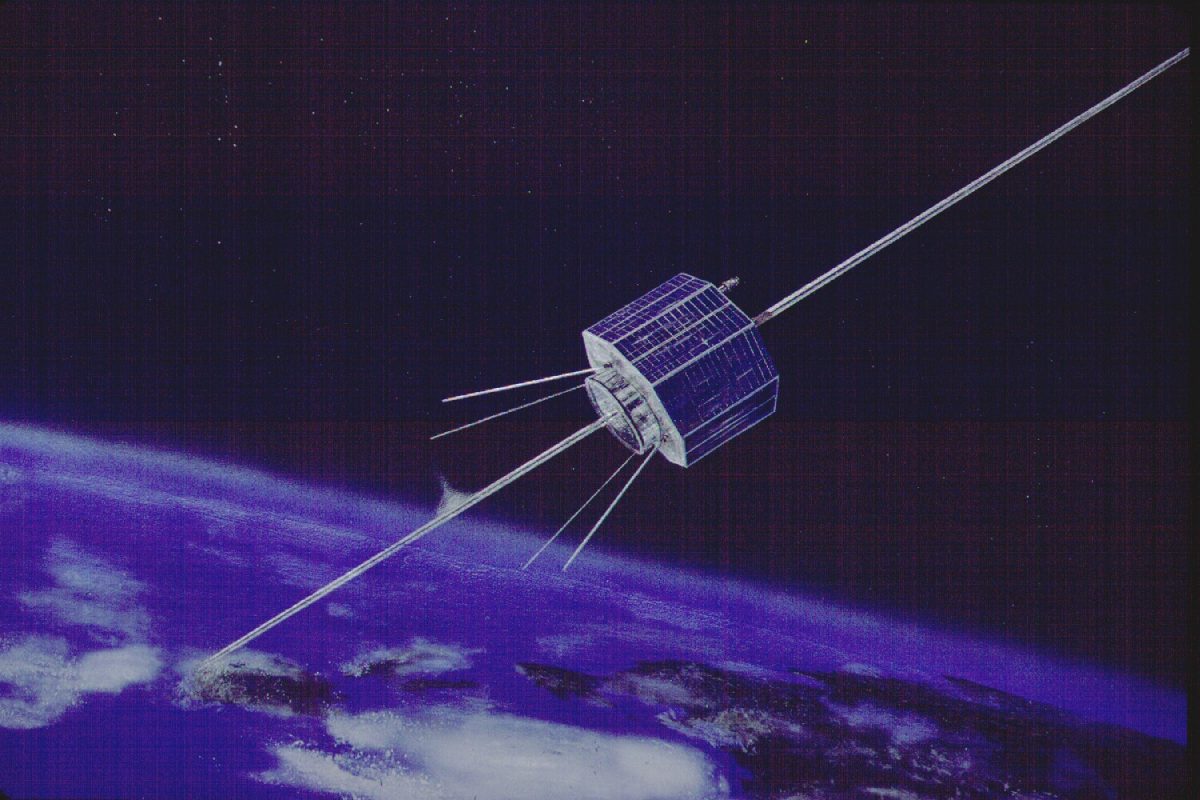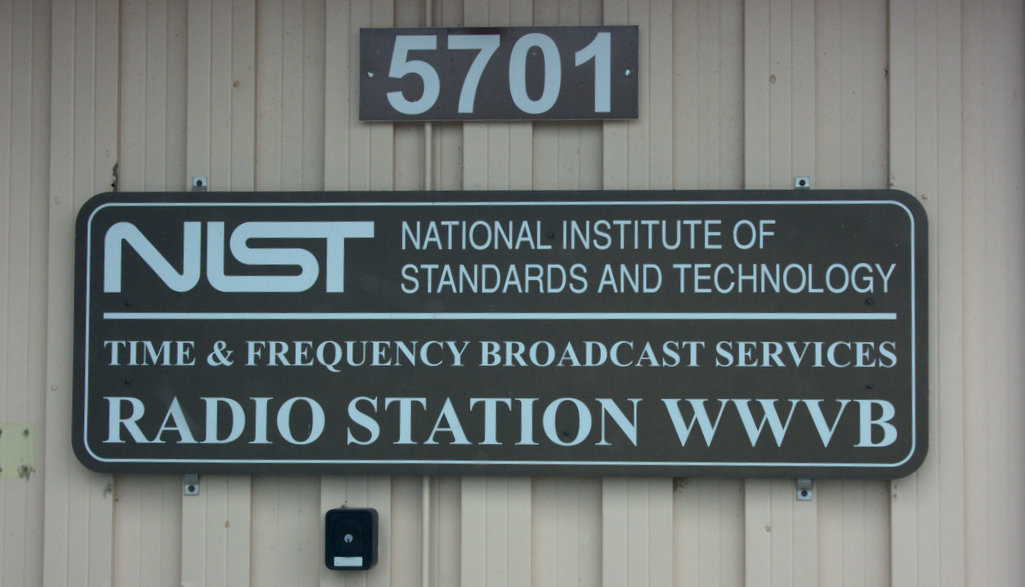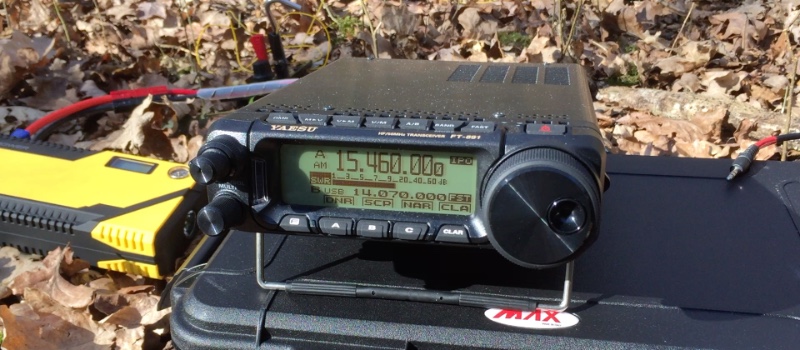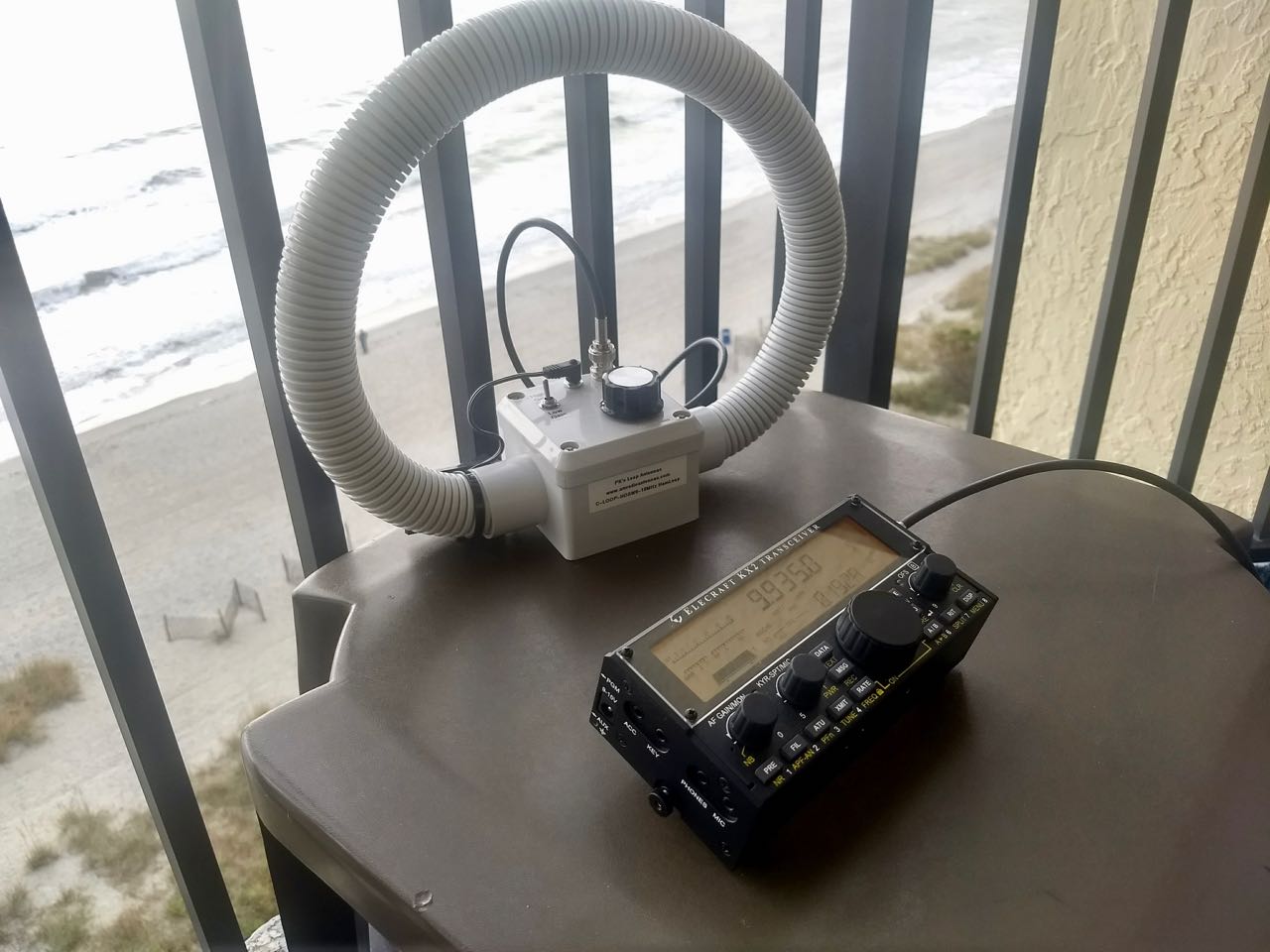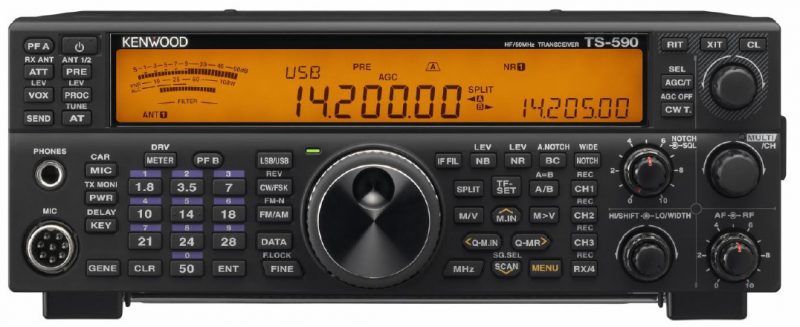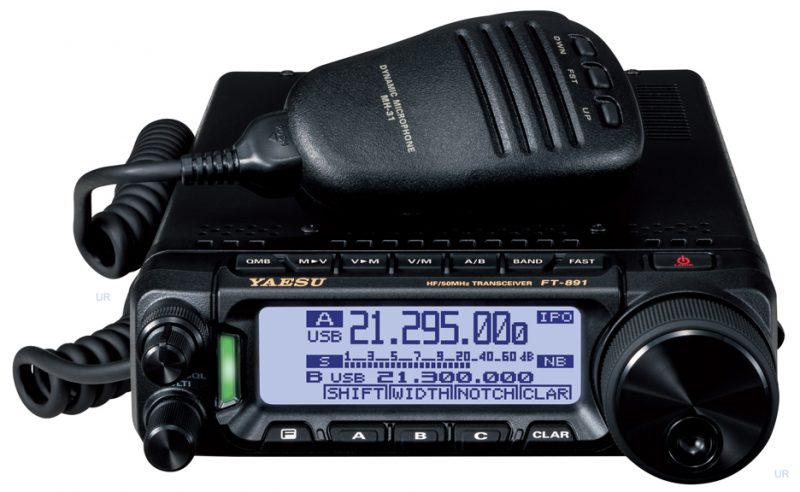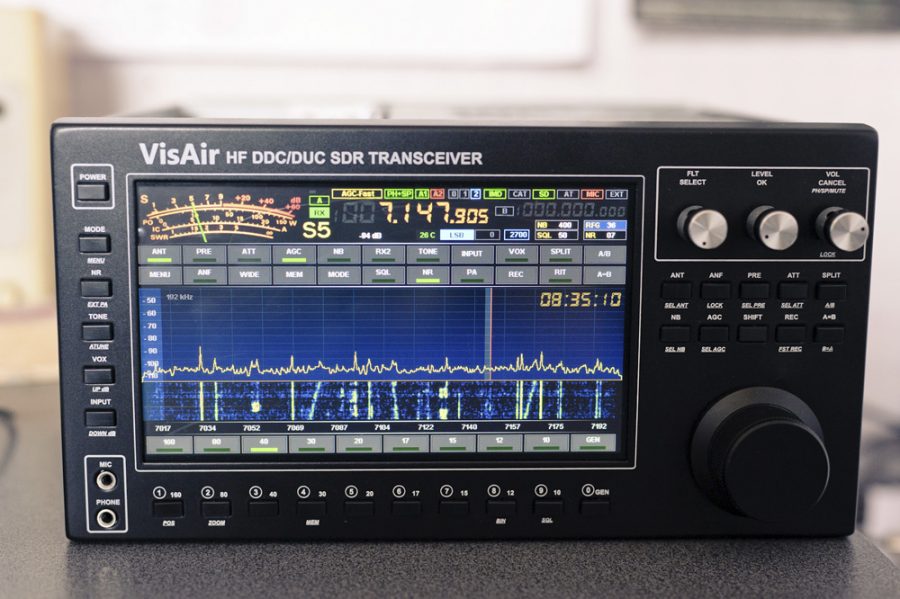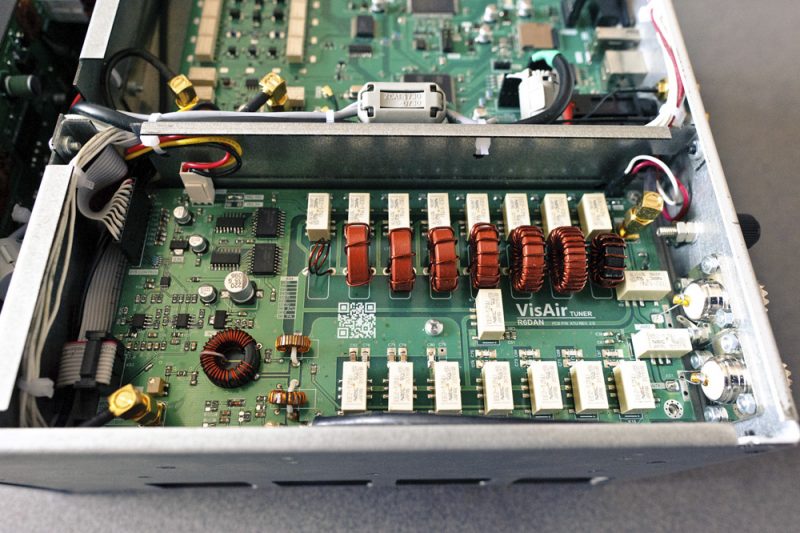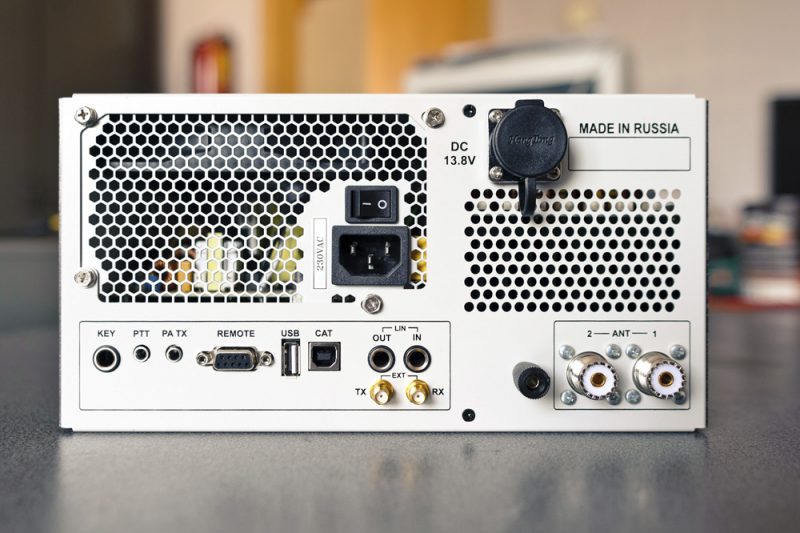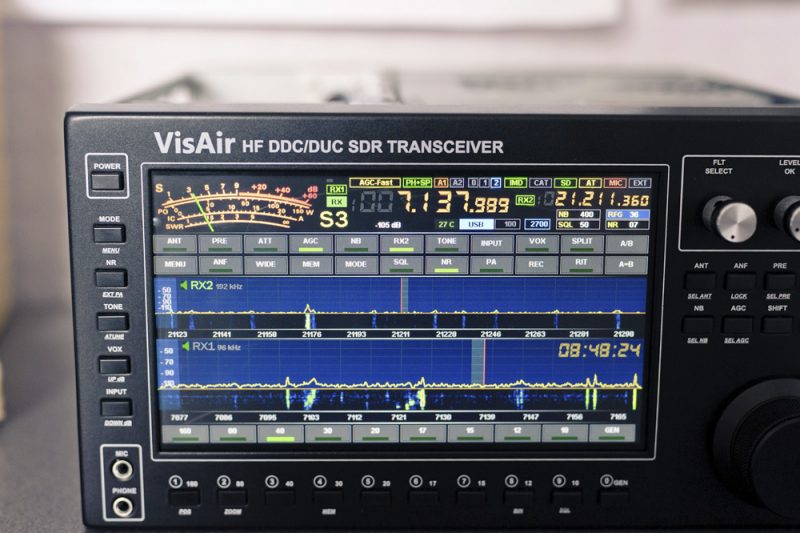Many thanks to SWLing Post contributor, John Brandt, who shares this excellent video featuring the amazing Jean Shepherd (K2ORS):
Tag Archives: Ham Radio
Radio Waves: WLW at 100, WWVB Upgrades, Ofcom Radio Amateur Data, and Unlocking the Airwaves
Radio Waves: Stories Making Waves in the World of Radio
Because I keep my ear to the waves, as well as receive many tips from others who do the same, I find myself privy to radio-related stories that might interest SWLing Post readers. To that end: Welcome to the SWLing Post’s Radio Waves, a collection of links to interesting stories making waves in the world of radio. Enjoy!
Many thanks to SWLing Post contributors Mike Terry, Dave Zantow, and John Figliozzi for the following tips:
WLW-AM Begins 100th Year On Air (WVXU)
It wasn’t Cincinnati’s first radio station, but WLW-AM is still the biggest.
Cincinnati industrialist Powel Crosley, Jr. began broadcasting WLW-AM over a 20-watt station from his College Hill home on March 2, 1922 – which means that the station is entering its 100th year today.
WLW-AM wasn’t Cincinnati’s first commercial radio station, but it is the oldest surviving station from the 1920s. WMH was operated by the Precision Instrument Co. from Dec. 30, 1921, to January 1923. WMH was sold to Crosley and merged into WLW, says Randy Michaels, the former WLW-AM programmer and Jacor/Clear Channel executive who is the best radio historian I know.
In 1934, WLW-AM became “the Nation’s station” when President Franklin D. Roosevelt flipped a switch in the White House to activate the station’s unprecedented 500,000-watt experimental transmitter under its Tylersville Road tower. WLW-AM broadcast at “super power” around the clock for five years, through 1939, and continued the mega-wattage output midnight-2 a.m. until 1943. For years WLW-AM has boasted that the 50,000-watt signal reaches 38 states. (I’ve heard the station in New Jersey, Maryland, North Carolina, Florida, Georgia, Illinois and Missouri.)
For 99 years, WLW-AM has broadcast some of the most popular personalities in town: Jim Scott, Gary Burbank, Bob Trumpy, Marty Brennaman and Joe Nuxhall, Cris Collinsworth, Jim LaBarbara, Bill Cunningham, Mike McConnell and Dale Sommers. Before them came Ruth Lyons, Bob Braun, Doris Day, Rosemary Clooney, newsman Peter Grant, sportscaster Red Barber and comedian Red Skelton.
Although WLW-AM likes to promote itself as “news radio,” it’s perhaps best known for carrying Reds and most Bengals games, plus University of Cincinnati football and basketball and Xavier basketball.[…]
WWVB broadcast system upgrades may include temporary outages (WWV)
The WWVB broadcast system is being upgraded with new equipment to improve the reliability of the signal. In order to install this equipment, beginning on March 9, 2021 the WWVB signal may be operated on a single antenna at approximately 30 kW radiated power for periods up to several days in duration, and may have occasional outages. Periods of reduced power operation lasting longer than 30 minutes will be logged on the WWVB Antenna Configuration and Power web page, and any outage longer than five minutes’ duration will be recorded on the WWVB Outage web page. Upgrades are expected to be complete by March 31, 2021.
Ofcom released age of radio amateurs data (Southgate ARC)
Following a Freedom of Information request about the age of radio amateurs Ofcom said they do not hold Date-of-Birth information for many radio amateurs but released what information they do have
Ofcom say “We do not hold a full breakdown of the age of issued amateur radio licensees as date of birth is not a mandatory field for licence applications.”
In September 2000 the then communications regulator (RA) abolished the ban on people under 14-years-old holding a Full amateur licence, since that time a person’s date of birth has served little regulatory purpose.
The data Ofcom released showed they only had Date-of-Birth information for:
7,312 out of 28,845 Foundation licences
4,104 out of 12,127 Intermediate licences
44,944 out of 54,072 Full licencesAs of March 1, 2021 there was a total of 95,044 valid UK amateur radio licences.
Download the FoI reply and the available age data at
https://ofcom.org.uk/__data/assets/pdf_file/0022/214915/age-of-amateur-radio-licensees.pdfYou can submit a Freedom of Information request to Ofcom online at
https://www.whatdotheyknow.com/new/ofcom
Unlocking the Airwaves (UMD)
Unlocking the Airwaves: Revitalizing an Early Public and Educational Radio Collection is a comprehensive online collection of early educational public radio content from the National Association of Educational Broadcasters (NAEB). The forerunner of CPB and its arms, NPR and PBS, the NAEB developed and distributed educational radio programs and accompanying print materials to schools and communities across the United States. What’s more, the NAEB lobbied extensively to unlock the airwaves—to access precious frequency space—in order to bring the voices of poet Robert Frost, architect Frank Lloyd Wright, anthropologist Margaret Mead, and conservationist “Ranger Mac,” among many other individuals, into American homes and classrooms.
The NAEB’s history is the dramatic story of idealists who believed in the utopian possibilities of technology for education and social uplift and who faced considerable challenges in pursuit of those goals, including economic depression, world war, and the scarcity of the electromagnetic spectrum. It’s a story that has much to tell us about 20th century American culture, as well as the 21st century’s environment of online educational technology and podcasting that we live in today.
Despite its historic importance and contemporary relevance, most of the NAEB members’ programs were never heard again after their initial brief moments on the air. The archives for the radio programs and their related paper documentation have been split for over 25 years between two institutions: the University of Maryland and the Wisconsin Historical Society. Unlocking the Airwaves reunites the split collections, finally realizing the potential of the collections of the NAEB for exploration and and the broader public.
Do you enjoy the SWLing Post?
Please consider supporting us via Patreon or our Coffee Fund!
Your support makes articles like this one possible. Thank you!
Radio Waves: Digital Audio via Vintage Radio, “10-Minute-ish” Transmitter, Why No Channel 37, and Inventor of the Audio Cassette Dies at Age 94
Radio Waves: Stories Making Waves in the World of Radio
Because I keep my ear to the waves, as well as receive many tips from others who do the same, I find myself privy to radio-related stories that might interest SWLing Post readers. To that end: Welcome to the SWLing Post’s Radio Waves, a collection of links to interesting stories making waves in the world of radio. Enjoy!
Many thanks to SWLing Post contributors Ron, Valdo Karamitrov, Ronald Kenyon, and the Southgate ARC for the following tips:
‘I play digital music through my 1949 radio’ (BBC News)
When we think of technology our imagination usually takes us to images of the future. But for some, technology links us to the past – whether for nostalgia or for personal reasons
Following our recent feature on vintage technology, we asked you to share some of your collections with us – and people from around the world responded..
Rob Seaward, North Yorkshire, UK: 1949 Murphy A146 radio
I have a collection of older technology which I have collected throughout my life – including old cameras, calculators, hi-fis and radios. I had been interested in music from an early age, but it was really when my father purchased a Bang and Olufsen music centre that my interest in not only music, but style and function really took off.
To me, a lower middle-class grammar school kid living in Bradford, I suddenly had access to a world of real style and glamour.
My favourite piece must be the Murphy A146 console radio designed by Gordon Russell in 1949.
Its nickname is the “Batwing” because of the shape of the back panel. The sound is rich, slightly warm and typical of valve equipment. In its day, the radio cost the equivalent of an average monthly wage, it was built to last and the original valves are still working today.
However, as it pre-dates FM it is a little limited. I’ve had it restored and as part of the process we had a Bluetooth adapter installed which means I can now play my favourite digital music through this wonder from the 1940s – which really amazes people.[…]
Getting on the Air With a 10-minute-ish Ham Transmitter (Hackaday)
Artificially constrained designs can be among the most challenging projects to build, and the most interesting to consider. The amateur radio world is no stranger to this, with homebrew radio designs that set some sort of line in the sand. Such designs usually end up being delightfully minimalist and deeply instructive of first principles, which is one reason we like them so much.
For a perfect example of this design philosophy, take a look at [VK3YE]’s twist on the classic “10-Minute Transmitter”. (Video, embedded below.)
The design dates back to at least the 1980s, when [G4RAW] laid down the challenge to whip up a working transmitter from junk bin parts and make a contact within 15 minutes — ten for the build and five for working the bands. [VK3YE] used the “oner” — one-transistor — design for his 10-minute transmitter, but invested some additional time into adding a low-pass filter to keep his signal clean, and a power amplifier to boost the output a bit.[…]
Why Channel 37 Doesn’t Exist (And What It Has to Do With Aliens) (Vice)
Since the advent of analog TVs, channel 37 has always been static. Here’s why.
A version of this post originally appeared on Tedium, a twice-weekly newsletter that hunts for the end of the long tail.
I’m endlessly fascinated by stories of the quirks that were built into the TV system where the well-laid plans of the system simply fell apart because it was asked to do too many things.
Nearly five years ago, I wrote about one of them, the tale of how radio broadcasters were able to shoehorn an additional FM station into the radio because of the proximity of TV’s channel 6 to the rest of the radio feed.
So when I was informed that there was another oddity kinda like this involving the TV lineups, I decided I had to take a dive in.
It’s a tale that centers around channel 37, which was a giant block of static in most parts of the world during the 20th century.
The reason for that was simple: it couldn’t fend off its scientific competition.
1952
The year that the U.S. Federal Communications Commission opened up the television system to use UHF, or ultra high frequency signals. The practical effect of this addition of bandwidth was that the total number of potential TV stations increased dramatically, from 108 to 2,051, overnight. The first UHF applications were granted on July 11, 1952, according to The History of UHF Television, a site dedicated to the higher-frequency television offerings.
The radio telescope that became a headache for the television industry
Within a 600-mile radius of the city of Danville, Illinois, population 31,246, are numerous major cities—among them Chicago, Detroit, Milwaukee, Atlanta, Minneapolis, Pittsburgh, St. Louis, Toronto, and Washington, DC.
Nearly the entire length of the Mississippi River fits into that radius. If Danville was located just a little farther to the east, the radius would also include Philadelphia and New York City. For all intents and purposes, a 600-mile radius from Eastern Illinois covers basically the entire East Coast except the state of Florida and the Northeast.[…]
Dutch inventor of the audio cassette tape dies aged 94 (Southgate ARC)
Lou Ottens, inventor of the cassette tape and a CD pioneer died aged 94 at his home in Duizel in Brabant on Saturday, Dutch media report.
Ottens, who studied to be an engineer, started working for Philips in 1952. Eight years later he became head of the firm’s recently introduced product development department. Within a year he and his team had developed the first portable tape recorder of which over a million were sold. Two years later he revolutionised the old reel-to-reel tape system by inventing the cassette tape.
‘I got annoyed with the clunky, user-unfriendly reel to reel system, it’s that simple’, Ottens said later. The new carrier had to be small enough to fit into his jacket pocket, Ottens decided, and he had a wooden model made to determine the ideal size. In 1963 the first plastic encased cassette tape was presented at an electronics fair carrying the slogan ‘smaller than a pack of cigarettes!’ The tapes were quickly copied by the Japanese but in different formats!
Ottens managed to make a deal with Sony to use the mechanism patented by Philips to introduce a standard cassette which was then rolled out globally. Over 100 billion were sold worldwide. Ottens went on to develop the CD, which again became a Sony-Philips standard and which sold over 200 billion.
In 1986 Ottens retired but he was often asked if he was proud of his inventions, which allowed millions to have access to music. ‘I have no ‘pride dial’’ Ottens said in an interview, stressing that both inventions were team efforts. His biggest regret was that that Sony, not Philips, invented what he considered to be the ideal application for the cassette tape, the Walkman. ‘That still hurts,’ he said. Dubious about the recent revival of the cassette tape Ottens said ‘nothing could beat the sound of a CD.’
Read more at DutchNews.nl
https://www.dutchnews.nl/news/2021/03/dutch-inventor-of-the-audio-cassette-tape-dies-aged-94/?
Do you enjoy the SWLing Post?
Please consider supporting us via Patreon or our Coffee Fund!
Your support makes articles like this one possible. Thank you!
W2ENY: New military handset and other accessories for the Mission RGO One
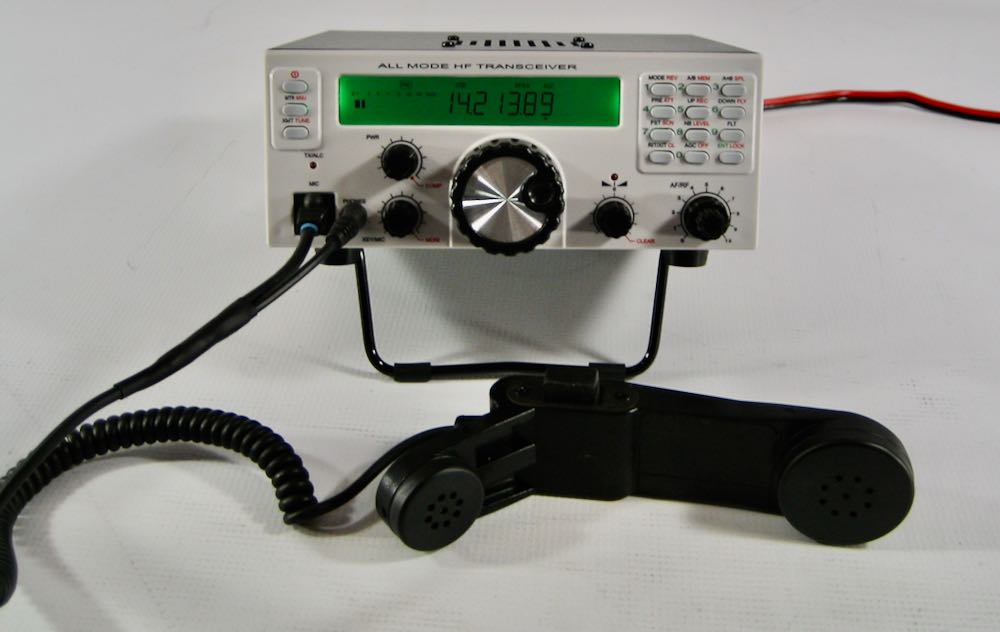 Many thanks to SWLing Post contributor, Don, who notes that W2ENY has developed a full suite of products for the Mission RGO ONE (click here to read our review of the RGO One).
Many thanks to SWLing Post contributor, Don, who notes that W2ENY has developed a full suite of products for the Mission RGO ONE (click here to read our review of the RGO One).
Don notes that W2ENY is producing a military handset, desk mic, headset with boom mic, and PTT cable.
Click here to check out these products at W2ENY.com.
Thanks for the tip, Don!
Guest Post: Mark’s review of the Yaesu FT-891 as shortwave broadcast receiver
Many thanks to SWLing Post contributor, Mark Hirst, who shares the following guest post:
Using the Yaesu FT-891 for SWLing
by Mark Hirst
Introduction
While I have a small collection of portable shortwave radios for outdoor listening, I’ve been looking to fill a gap in my amateur radio lineup for a while. Outdoor operation has become important in recent years as solar cycle conditions deteriorated along with rising levels of QRM in urban neighbourhoods. The ICOM IC–7200 with Wellbrook loop stays at home fighting a losing battle with PLA noise, while the very portable FT–817ND does occasional data modes contacts and outdoor listening. Somewhere in the middle, the FT–891 promised to provide a modern and more powerful data modes station, a radio to take on holidays, needing external batteries, but portable enough for walks into the country side. Earlier this year, I bought one new from my local ham radio store, and what follows are my findings and observations so far on shortwave listening.
Audio Characteristics
I’ve accumulated hundreds of recordings of VOA Radiogram and Shortwave Radiogram since 2013, so a recent woodland expedition with the FT–891 was an opportunity to compare a recording made with it against those of other radios I’ve used.
The most striking difference is the lack of frequencies in the lower part of the audio spectrum along with a distinct cut off at around 5kHz.
This is easily visualised in the following comparison between the FT–891 and the Tecsun PL–680. Note the conspicuous pillar associated with MFSK32 from these Shortwave Radiogram broadcasts, and interfering RTTY on the FT–891 recording:
While this audio profile may not be to everyone’s taste, the extra sparkle yields voice audio that is clear and distinct. I find those low frequencies make the audio muddy and tiring to listen over long periods, so I’m quite happy with this.
When listening to speech based broadcasts through the top mounted speaker, the audio is also precise and intelligible, and provides more than enough volume.
You can judge for yourself from this 2 minute video I made recently:
Headphones, External Speakers and Recording
You also have the option of connecting an external speaker or headphones to a socket on the side of the radio. Be aware that the audio level is different for headphones, and is controlled by a small switch hidden behind the front panel. I expect people may go for one option such as headphones and then stick with it, rather than continually detaching the front of the radio and moving the delicate switch back and forth.
If you turn the volume right down you will hear a hiss, although its really only noticeable if you face the speaker directly and get close. Listening outdoors with the sounds of nature around you? It’ll be fine. There’s no way to avoid it with headphones of course, with forums suggesting inline resistors or high impedance headphones as solutions.
Audio recordings can of course be taken from the headphone socket, but you will get better results from the data port on the back. I use a UD04YA cable which provides 3.5mm audio in and audio out jacks, plus a USB cable to provide PTT functionality. It’s meant for data modes operation with the FT–817, but I have used it successfully with the FT–891 for PSK contacts using fldigi, eliminating the need for CAT control through a second cable to the radio’s USB port.
Customising for SWL
The advanced manual for the FT–891 helpfully provides a section called ‘Tools for Comfortable and Effective Reception’, so I began configuring the radio using the guidance there.
First up was re-configuring the front panel RF/Squelch knob to only control RF gain (Menu 05–05). I use the same configuration on my FT–817ND to dial back RF gain, allowing the AGC to pick up the slack.
Next was enabling the awkwardly named Insertion Point Optimisation (IPO) which switches out the pre-amplifier. It’s interesting to note that this setting can be associated with a stored memory channel, which became relevant later when I used CAT control to program some favourite frequencies.
The radio has an attenuator, although I’ve not found a need for it so far.
The AGC can be configured as Auto, Fast, Mid, and Slow. Since it is not a ‘set and forget’ setting like the RF control or IPO options, it might be a good candidate for assigning to one of the three user definable buttons below the LCD screen.
Audio can be fine tuned using four menu options (06–01 to 06–04) to control high and low frequency cutoff, but after some experimentation I have turned these options off.
As an aside, I found the LCD backlight, button illumination and TX/Busy lights too bright for indoor use, so dialed them back to their minimum values.
Listening Tools
The radio provides some additional tools as part of its IF DSP. The features of particular interest are Digital Noise Reduction (DNR), Noise Blanker, IF Notch Filter, Digital Notch Filter, and Narrow IF filter. Contour, IF Bandwidth, and IF Shift are not available in AM mode, and you must resort to SSB to get them. More about SSB in a moment.
Out of this wide array of options, I’ve only explored Digital Noise Reduction and the Narrow IF filter so far, as they offer fairly immediate gains without too much configuration.
Narrow filter simply reduces the total IF bandwidth from 9kHz to 6kHz, which gives some immediate relief to higher frequency noise. In tougher conditions at home tackling QRM, the harsher sound it causes has sometimes been counter productive.
At the outset, it’s obvious that the DNR capability of the FT–891 is a powerful feature. Rather than providing a level of processing that varies from a little to a lot, the radio provides 15 different ‘algorithms’ which can be selected for best results. This means you will tweak the DNR setting to address signals on a case by case basis.
Comparing it with the IF noise reduction of my ICOM IC–7200, the ICOM has a scale of diminishing returns as the DSP level is turned up, whereas the FT–891 seems to start strong and it’s more about picking the algorithm that sounds best.
After testing the DNR on AM broadcast stations away from the noise at home, voice audio sounds distant and words can be clipped, which is fine for SSB amateur radio contacts, but makes me think it’s not a feature of first resort when trying to improve broadcast reception. In those circumstances, the narrow filter might be a better option.
The Trials of Single Side Band
On the matter of SSB and using it to combat adjacent or co-channel signals, the radio offers a single SSB option in the mode menu, picking USB or LSB for you automatically based on the current band. When tackling broadcast band interference however, you want the option to go in either direction. The radio also changes the current frequency by 700Hz when SSB is selected, which then has to be corrected with the main dial.
You would begin by switching to SSB mode by pressing and holding the band button. If you’re lucky, the default setting is the one you want.
If it isn’t, activate the settings menu with a long press of the F key, go to the menu option SSB BFO (11–07), select it and use the multi-function knob to change the mode away from Auto to LSB or USB.
As you are doing this, the VFO will change to LSB or USB too. Leave the setting on the option that suits your needs.
If you exit the menu option without saving (pressing F), the mode will remain changed, but the override is not saved. This can be a useful quirk because next time you turn the radio on, it will be back in auto mode.
If you commit the override by pushing the multi-function knob instead, the radio will stay in manual mode until you remember to return to the menu and restore automatic behaviour again.
It’s a needlessly complicated system, as I discovered recently while recording another Shortwave Radiogram broadcast. Even after testing the procedure previously for this article, the radio was determined to stay in LSB no matter what.
Memory Programming
Since the radio has no keyboard for direct frequency input, an early priority for shortwave listening was to program some of the 99 memories available. My plan was to have some favourite broadcast stations, along with WX, Volmet, GMDSS, and some data mode frequencies. To handle ad-hoc stations however, I wanted a way of moving quickly across the main shortwave bands without excessive use of the main tuning dial or multi-function knob.
Taking the official definitions of the broadcast bands between 60m and 16m, and combining those with frequency schedules, I came up with a series of frequencies 150kHz apart across each of those bands, guaranteeing that no broadcast was more than 150kHz away.
The combined list of favourites and the 150kHz stepping stone frequencies resulted in 70 memory channels in total. As I wanted to apply alphanumeric tags to those channels, and didn’t relish the prospect of entering them manually, my next port of call was the CAT control manual to see how those memories could be set programmatically.
While there is commercial software available for the FT–891, I only needed to set up the memory channels, so decided to adapt some PowerShell I’d written for another radio, sending the necessary serial port commands to configure my list.
Now that is done, I can fast travel using the stepping stone memories to the closest point in a band, then use the fast mode of the main tuning dial to move quickly to my final destination.
The following table lists my current stepping stone channels in kHz:
| 60m | 49m | 41m | 31m | 25m | 22m | 19m | 16m |
|---|---|---|---|---|---|---|---|
| 4750 | 5900 | 7200 | 9400 | 11600 | 13570 | 15100 | 17480 |
| 4900 | 6050 | 7350 | 9550 | 11750 | 13720 | 15250 | 17630 |
| 5050 | 6200 | 7500 | 9700 | 11900 | 13870 | 15400 | 17780 |
| 7650 | 9850 | 12050 | 15550 | 17930 | |||
| 7800 | 15700 |
Memory Access
An obvious way to access the memories is to toggle memory channel mode with the V/M button, then cycle through the memories using the multi-function knob. Depending on your memory choices, you will hear relays clicking as the radio jumps back and forth between widely spaced frequencies and bands. You will also need a good memory of your memories, so you know which way to turn the multi-function knob.
An alternative and perhaps faster method is to press the M>V button. This brings up a multi-line listing of memories that can be scrolled through using the multi-function knob. Pressing the M>V button again copies the selected memory to the VFO and leaves you in VFO mode. This avoids the radio flipping across bands and the associated relay activity.
Although it is not documented, if you push the multi-function knob on a selected memory channel in the multi-line listing rather than using the M>V button, the selected memory is activated and the radio is left in memory channel mode displaying the memory tag.
Disabling Transmit
At the time of writing, I haven’t discovered a way of formally disabling transmit, and the minimum transmit power goes no lower than 5W. Since my main interests are around shortwave listening, utility stations and an occasional data mode QSO, I have not fitted the microphone to the radio. In that configuration at least, there is no danger of me manually transmitting into a receive antenna by accident.
Outdoor Power
Reports vary on the power consumption of the FT–891. It certainly isn’t as high as the 2.0A documented in the user guide.
While some sources claim values in the region of 1.0A, my power supply shows around 0.4A at 13.8V when receiving a typical HF broadcast. You will notice where some of that power goes quite quickly, as part of the radio gets warmer.
To save weight, my preferred power supply in the field is usually a lithium battery designed to jump start smaller engined cars. This versatile 12V battery also supplies 5V USB power to phones and tablets, and can even charge laptops.
In Conclusion
Control ergonomics and screen size are factors that can detract from shortwave listening on these kinds of radios, with smaller speakers and menu options for features normally at your fingertips.
Despite this, I’m happy with the audio, and I like the emphasis on mid-range frequencies in its audio spectrum. The digital noise reduction is impressive and can tackle significant QRM environments, but for outdoor listening may not be your first port of call.
Memory presets can make tuning less laborious, while assigning key listening tools to the customisable front panel buttons should reduce the need to access menus. I may consider defining some stations with known co-channel issues to memory with preset LSB and USB variations, to allow rapid responses to interference in future.
In good conditions, I suspect there is little difference between the FT–891 and FT–817ND for general listening. The FT–817ND has produced some of my best recordings of Shortwave Radiogram. The newer radio however brings many advanced tools to bear on more difficult signals, while its band scope and full sized VFO tuning dial enable desktop style shortwave exploration.
The ICOM IC–7200 is constrained by interference at home, biding its time for when the solar cycle swings back. When it’s been out on field days, it has always been a strong performer for broadcast listening. All the important controls are upfront, but is not a trivial thing to transport on foot. While the FT–891 has impressive DNR chops, I think I prefer the ability of the IC–7200 to apply noise reduction in incremental steps. Perhaps the algorithm approach will grow on me in time.
Any amateur radio operator using the FT–891 should have no trouble using it for shortwave listening. It attracts a lot of positive reviews for its ham radio capabilities, and it looks like those features carry across for listening to the world too.
An excellent review, Mark! Thank you for sharing.
The Yaesu FT-891 must be the most popular HF transceivers Yaesu sells today. So many of its users rave about its performance and audio characteristics. Mark, thank you for sharing your experience with the FT-891 as an SWL!
Click here to check out the affordable IP67 rated case Mark uses to house his FT-891.
What’s your favorite general coverage transceiver for shortwave listening?
Yesterday, at the (Virtual) 2021 Winter SWL Fest, I gave a presentation about QRP general coverage transceivers that I regularly use for shortwave broadcast listening (SWLing).
My discussion was limited to QRP–or low-power–transceivers designed for portable use, but they only represent a small fraction of the new and used transceivers on the market.
So what is “general coverage”––?
A ham transceiver with “general coverage” means that the receiver portion of the radio is not limited to the ham bands only; these receivers typically receive between 100 kHz and 30 MHz (i.e., the full medium and shortwave radio spectrum). Many transceivers, starting in the 1980s, employed a general coverage design as a feature of the radio. Some radios implemented general coverage receiving better than others. In most cases, there was a compromise to performance when the receiver was opened to general coverage reception, so many manufactures held to a ham-band-only platform to optimize performance where hams sought it most. Today, receiver architecture can better accommodate general coverage without compromising sensitivity and selectivity on the ham bands. This is especially true with new SDR-based transceivers that employ direct conversion or a hybrid architecture.
My favorite?
My current favorite is the new Icom IC-705. I purchased this rig last year and have done a tremendous amount of SWLing and MW DXing with it. I love its overall performance, portability and recording/playback features.
What’s your favorite?
I’m betting a lot of us use transceivers for shortwave broadcast listening.
What’s your favorite general coverage rig and why? I’m also curious how many of you almost exclusively use a transceiver for SWLing. Please comment!
VisAir HF DDC/DUC Transceiver: Randy purchased one exclusively for shortwave radio listening
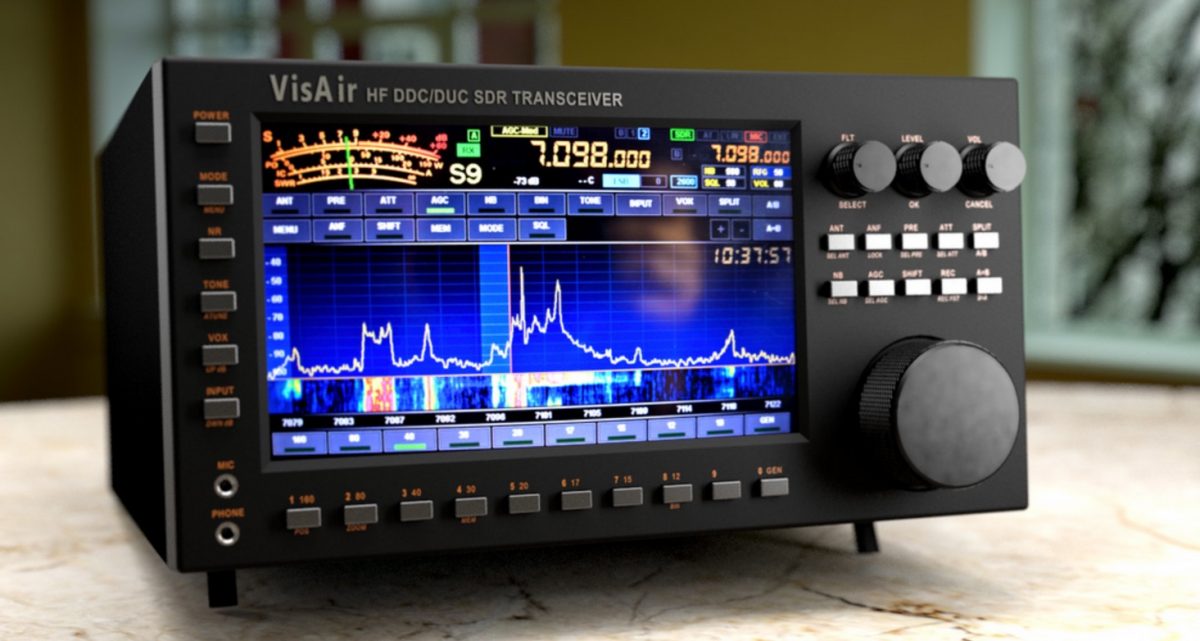 Many thanks to SWLing Post contributor, Dan Robinson, who recently shared a message he received from his friend Randy regarding the VisAir HF DDC/DUC Transceiver:
Many thanks to SWLing Post contributor, Dan Robinson, who recently shared a message he received from his friend Randy regarding the VisAir HF DDC/DUC Transceiver:
I recently acquired a VisAir transceiver from Russia. It is an amazing SDR unit developed by two amateur radio operators. It is about the same size as the RDR55, but at about 1/3 the cost. While it does not have FM or amateur 2/6 meter, GPS, and a couple of features, this VisAir has other features not found on the RDR55 such as dual receivers, waterfall, receiving audio equalizer, CW decoder, etc. It is a true SDR receiver. The user manual was in Russian and I had to break it into thirds so that I could get it translated into English. Interestingly, the user interface is completely in English despite its Russian origins. While designed primarily for amateur radio operators, it works especially well on the shortwave bands.
[…]I have really been enjoying this “transceiver” and as you imagine, I use only the receiver portion of the unit. It has two antenna connectors and you can configure these however you prefer. I set one as a receive antenna and the other as a transmit antenna to avoid accidentally hitting the antenna match or some function and sending power into my equipment. I also disabled the transmitter portion to further protect against any accidental transmissions.
Unfortunately, virtually all the YouTube videos and information are in Russian and also its use is shown only on the amateur radio bands, but I can tell you that this is a very nice SW DX receiver with lots of interesting user defined menus whereby the unit can be modified to match the user’s preferences. Here is a website with some information on the unit.
As you know, I have enjoyed using a wide variety of communications receivers from simple beginner’s units to the more complex and highly esteemed units built to exacting standards for government use. This VisAir is built by two guys in Russia and amazingly it was designed by them in 2017 and not a whole team of design engineers such as found at Yaesu, Kenwood, and Icom. From what I understand, the unit sells in Russia in rubles for the equivalent of about $1800 USD. Unfortunately it is not exported to the USA and it only comes with a 220 VAC power supply and so I operate it exclusively off of DC current without any issue. It is my understanding that this low production transceiver has sold between about 200 – 300 units and virtually all of these were in Russia. To my knowledge, I am the only person in the USA with this unit. Further, it is my understanding is that there is a wait list of about 2 years to obtain the unit. The VisAir is upgraded via firmware and my unit has the latest firmware installed.
When I got information about the transceiver to consider for purchase, there was only a Russian user manual available. I have access to an online PDF translator, but it can only accept up to 10 MB files and so I had to break the Russian manual into 3 sections, translate each section into English, and then stitch the 3 sections back together to make a complete English manual (which is too large to email as a whole). Attached are sections 2 and 3 of this English user manual for the VisAir:
You can look at the manual and see what features are available with this transceiver. While the translator worked nicely overall in getting the manual from Russian into English, there are issues whereby the illustrations have Russian language information and these did not translate, but this did not thwart me from understanding and using the VisAir as most of the Russian information relates to connecting the transmitter to microphone and other devices.
As with most all low production units from small producers, the user manual is good at pointing out controls, but lacks in explaining what is the purpose of settings or offering suggestions on the settings other than telling you what is a “default” setting from the factory. I found this same dilemma with the manuals for the Fairhaven RD500, the Reuter RDR55, the Kneisner & Doering KWZ30, etc. But an experienced DXer can generally figure out operations and establish the appropriate settings with a little time. For the first 3 days of operation, it was a discovery for me as I kept learning about new features that I didn’t know about previously and weren’t highlighted in the user manual. It was like reading the user manual for my Toyota Highlander in that there are options and controls that are found in menus and not particularly obvious at first glance or with casual use.
Randy
Thank you, Randy, for sharing your comments about the VisAir transceiver here on the SWLing Post. Looks like a fascinating tabletop SDR.

